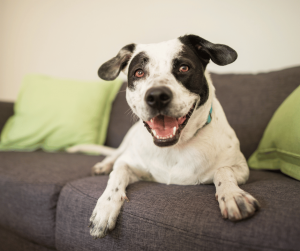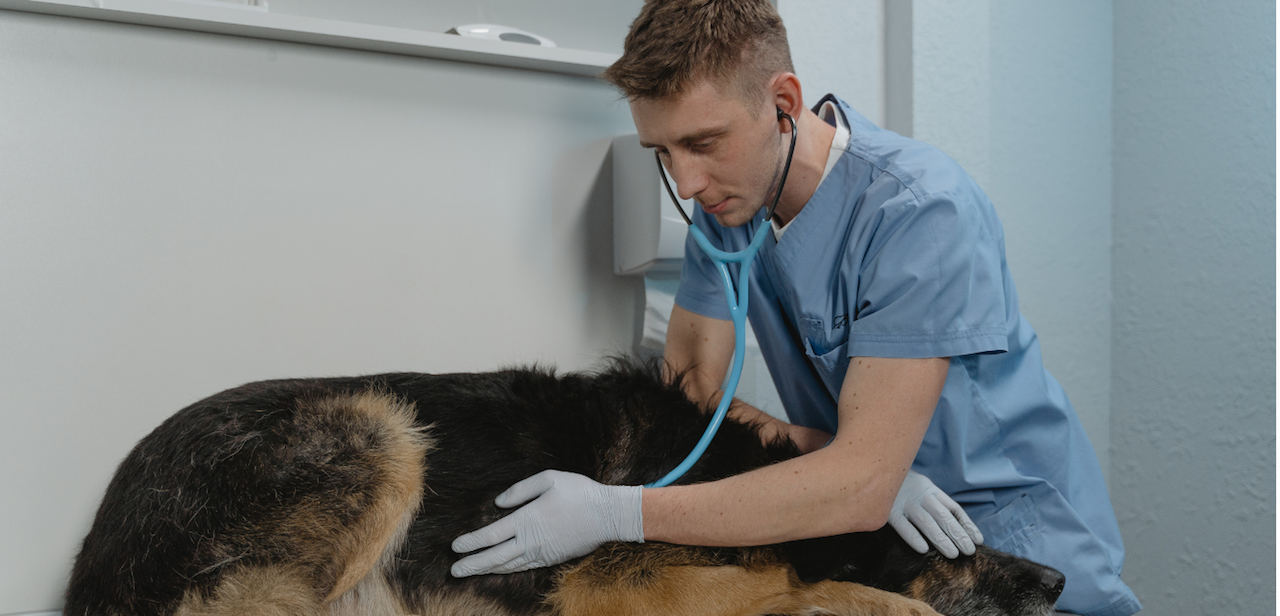Working longer hours due to cost of living pressures can put more stress on your pet. This means that increased time left at home can cause your dog’s anxiety levels to increase. This is a particular concern for dogs which are already prone to separation anxiety. Thankfully, anxiety in canines can be managed through various behavioural and medicinal treatments.
What is separation anxiety in dogs
Research reveals that dogs who are very attached to their owners often struggle with separation anxiety. The RSPCA explains that ‘separation related behaviour (SRB) happens when a dog misses their owner so much, they feel really upset. Signs your dog might be feeling this way include them being a bit more destructive than usual, having accidents indoors, or neighbours mentioning they’ve been barking or howling.
Symptoms of separation anxiety in dogs
When it comes to separation anxiety, some symptoms can be obvious whereas others can be more subtle.
Some common signs include:
- Vocalisation (howling and barking whilst you’re leaving the house is a sign of departure cue anxiety)
- Excessive barking or howling when left alone
- Destructive behaviour (targeted at the door you left the house from)
- Destroying furniture, shoes or other items in the house
- Excessive greeting
- Pacing or restlessness when owner is not present
- Toileting (Inappropriate urination or defecation in strange places or inside the house)
- Attempts to escape from confined spaces such as crates or rooms
If your dog displays any of these symptoms consistently when left alone, it is likely that they are experiencing separation anxiety.
Less frequent, easy signs to miss include:
- Trembling, whining or pacing
- Excessive salivation
- Self-mutilation
- Repetitive behaviour
- Vomiting
Tips for managing separation anxiety in dogs
If your dog is showing signs of separation anxiety, there are several steps you can take to help manage their condition:
Gradual desensitisation – This involves slowly increasing the amount of time your dog spends alone, starting with short periods and gradually building up to longer periods. This can help them get used to being alone without feeling anxious or stressed.
Create a safe and comfortable space – Ensure your dog has a comfortable and familiar space to be in while you’re away. This could be a crate, bed, or even just a specific room in the house that they feel secure in.
Exercise and mental stimulation – Regular exercise and playtime can help reduce anxiety in dogs. For dogs, in particular, a daily walk can result in lower levels of aggression, fear, and separation anxiety. Additionally, providing them with stimulating toys or puzzles can keep their minds occupied while you’re away.
Seek professional help from your vet – If your dog’s separation anxiety is severe, it may be beneficial to seek the advice of a professional dog trainer or behaviourist who can work with you and your dog to develop a personalised treatment plan to settle the anxieties and relieve any related pain.
Removing Triggers That Cause Your Dog’s Anxiety – A veterinarian can help to identify possible stressors and, once identified, it becomes a simple matter of removing these stressors to test whether your dog’s anxiety lessens.
Consider natural remedies – As mentioned earlier, natural products such as CBD oil, herbs, and flower essences have been shown to help reduce anxiety in dogs. It is important to consult with your vet before trying any new treatments for your dog.
Dog anxiety medication

Before jumping straight to medication, explore every behavioural therapy avenue. Many pet owners lean towards natural remedies and treatments before considering prescription drugs. Here are the most popular pharmaceuticals for treating dog anxiety:
- Alprazolam (Xanax)
- Amitriptyline
- Buspirone
- Clomipramine (Clomicalm)
- Dexmedetomidine (Sileo)
- Diazepam (Valium)
- Fluoxetine (Reconcile or Prozac)
- Lorazepam (Ativan)
- Paroxetine (Paxil)
- Sertraline (Zoloft)
Natural products to help dogs with separation anxiety
CBD oil represents a natural alternative for managing anxiety in dogs, increasingly recognised by veterinarians and pet owners favouring a holistic approach to pet healthcare. Additional natural remedies for consideration in addressing separation anxiety in dogs include herbal options like St. John’s Wort, Flower Essences, and Essential Oils. Veterinary clinics are also exploring complementary treatments such as body work, acupuncture, and behavioural therapy.
CBD oil for dog separation anxiety
The advent of medicinal cannabis treatment for anxiety in humans has led to veterinarians now considering prescribing CBD oil for animals, now available in Australia through CBD Vets Australia. There is little research directly on the effects of CBD oil for pet anxiety. However, over the past few years, medicinal cannabis companies are exploring how CBD may reduce anxiety in dogs particularly after feedback from pet owners about their personal experiences.
Recent studies in humans, along with other preclinical research, suggest that CBD oil may alleviate anxiety and PTSD symptoms. This effect is attributed to its interaction with brain and central nervous system receptors, which regulate hormones and signals linked to anxiety and fear reactions.
CBD oil has more potential benefits.
Hemp seed oil is enriched with various vitamins, minerals, and essential fatty acids, notably omega-3 and omega-6, which contribute to its significant health benefits for both humans and animals. Conversely, CBD is renowned for its therapeutic properties, offering health advantages that extend beyond those provided by regular hemp seed oil. CBD oil is recognized for its potential in addressing health issues such as chronic pain and epilepsy in humans, in addition to its capability to alleviate stress, improve sleep quality, and mitigate symptoms of joint pain and arthritis. Presently, the Therapeutic Goods Administration (TGA) has sanctioned CBD oil for use in treating conditions including epilepsy, multiple sclerosis, chronic pain, nausea and vomiting, and in palliative care settings.
Hemp natural products are not made in the same way.
In dogs, CBD oil has shown potential in reducing anxiety-related behaviours such as barking, whining, phobias related to noise, separation anxiety, pacing, and other indicators of stress or discomfort. When considering hemp oil or CBD oil for dog anxiety, you might have noticed hemp products marketed as solutions to help soothe anxious dogs. But what distinguishes hemp seed oil from CBD oil? Here, we explore the key differences between hemp seed oil and CBD oil, ensuring a clear understanding of what each offers.
Hemp seed oil is typically produced by cold-pressing hemp seeds to yield a nutrient-rich, highly concentrated oil. Conversely, CBD oil is derived from the entire hemp plant, encompassing a broader range of beneficial plant compounds, including cannabinoids and terpenes.
The TGA views hemp seed oil and CBD oil differently.
Since 2017, hemp seed oil has been recognized as a food item in Australia, allowing it to be sold in food stores and used in pet food products. CBD oil, which contains more than 98% cannabidiol, is classified as a Schedule 4 drug, meaning it can only be prescribed by doctors for certain medical conditions and by veterinarians for animal health issues.
Conclusion
If your dog suffers from separation anxiety, there are several treatments that may help. It’s crucial to work out a treatment plan with your vet. CBD Oil represents an innovative and natural treatment avenue in the arena of animal health care, showing promise for various conditions, including anxiety in dogs. However, it’s important to note that not all CBD oil is created equal, and purchasing CBD oil online is illegal.
As you explore the root causes of your dog’s separation anxiety and evaluate potential remedies, consider discussing the possibility of using CBD with your vet. For any questions, please reach out to CBD Vets Australia or consult your local veterinarian and direct them to CBD Vets Australia for easy online prescription of CBD for vets.


